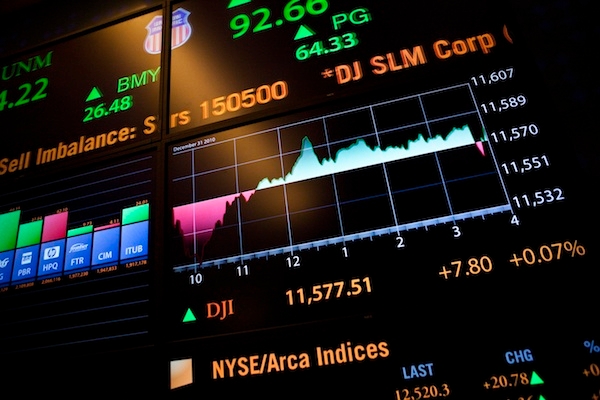When can a famine taste pretty good? The answer is when you are eating the cattle which have just died of thirst. And that’s where we are today in the investment market. The famine is a lack of income — cash held in a completely safe bank, or in short-term government securities, earns almost nothing. Where’s the feast? The answer is in yield-bearing investments, into which savings are pouring — they produce a modicum of yield, to be sure — but that is dwarfed by the capital gains which have accompanied them. Those who have already made this switch are understandably rather pleased, and often rather pleased with themselves. Both of these could prove to be an error; the ‘safety’ of cash held risklessly on deposit has the silhouette of the frying pan, and what goes up has a habit of burning up, too.
The lack of income opportunities has not occurred by chance — it has been engineered by central banks around the world (literally so, now that Japan has joined in) and it is intended to transfer wealth from the saver, who receives an inadequate return, to the borrower, who correspondingly pays an inadequate interest rate. Never mind that if you cap interest rates, you ration borrowing opportunities too: just ask the cabbage-growers of Gdansk in the 1980s about that dynamic. (Probably easier to take my word for that, actually.) The central bankers are doing it because it is the most effective way to reduce the burden of debt: if interest rates are below the rate of inflation, it palliates the huge problem destabilising the world after the borrowing binge of the 2000s.
In social terms, this is no bad thing, since the transfer takes money from the old who, as a class, have nothing more economically to give to society, and gives it to the young, who have. It explains many of the conundrums of society: why wage-earners are feeling the pinch — earned income is as scarce as unearned — and why the very rich are getting so very much richer: having no need of income, they feed off the capital gain. No wonder all of us in the financial world pretend in a social context to be underwater basket-weavers!
What’s to be done about it? My job is to protect people’s savings, and I take no satisfaction from this rise in asset price — because it is the next move, which follows this one, on which we must be focused.
I sometimes tell people about a weekend holiday retreat which I went on with my wife, Jane, a number of years ago. I made a tactical error: I took with me the 1937 Stock Exchange Yearbook (those were the days when there was a heady romance between us). Alas, the book was of electrifying fascination: all else was forgotten. I remind myself of it because of its relevance now.The backcloth was uncannily similar to today. The Depression hit Britain early: the first years of the 1930s were terrible, and under the guiding hand of Maynard Keynes, interest rates were lowered sharply: the government issued a Gilt Treasury 1 per cent 1935–1942. There was an economic recovery, and 1936 saw a sharp rise in asset prices as savers tried to find a return on their money: the peak of this phenomenon was 31 December 1936 — the day on which the prices for the 1937 Stock Exchange Yearbook were fixed.
The clever clogs among us will know that 1936 has been the only year in which it was impossible to invest in the equity index and not get your money back in real terms for 50 years. The safer the investment, the more overpriced it was in late 1936. Electrical and radio stocks were still in comparative terms cheap, precisely because they were risky. (So it is today — the likes of Google, Microsoft, Facebook might turn out to be poor investments, but their risk/reward is pretty good.) But if you went for debentures, unsecured loan stocks, preference shares of breweries, their steadiness meant that paying too much for them did irretrievable damage to the long-term value of portfolios. Those who own the high-yielding FTSE stocks (can’t go wrong with Glaxo on a 5 per cent yield!) need to understand the risks they take. We have much of this sort of thing in the portfolios we look after — but we do not see them as safe.
What’s to be done? Fear is the beginning of wisdom, and a first step is to mistrust safe investments, which are priced wrongly because of the distortion — government-induced — of interest rates. It requires alertness, humility and bravery: alertness for changes in sentiment, the humility to know that these tectonic events are largely uncallable, and the bravery to act on an insight that true safety may be found in unlikely places. Perhaps it is time, after all, to be an underwater basket-weaver!






Comments